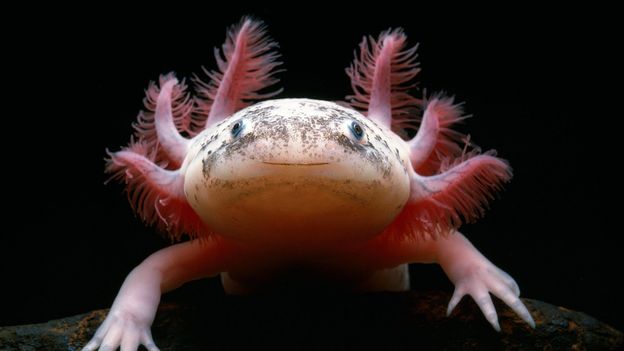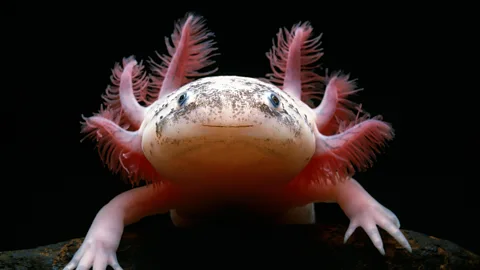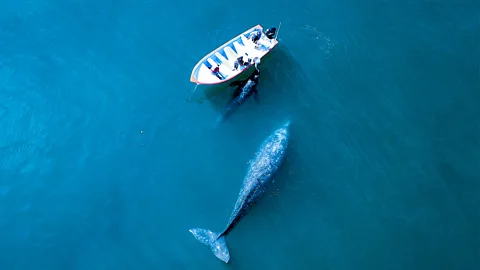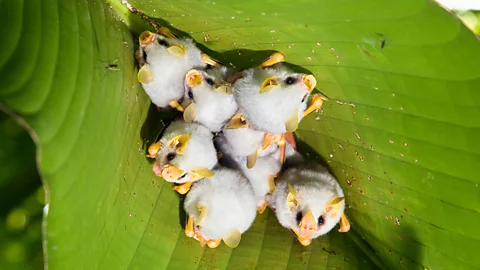World
10 remarkable wildlife experiences around the world

 Minden Pictures/Alamy
Minden Pictures/AlamyFrom a horseback safari in Brazil to one of the marine world’s most flamboyant sex shows, these wildlife encounters allow travellers to come face to face with animals – without getting too close.
For nearly a century, people around the globe have celebrated World Animal Day. Launched in 1925, the annual event on 4 October is designed to raise awareness of animal rights issues and help improve the treatment and wellbeing of wildlife. Today, the international effort includes more than 90 ambassadors in 70 countries, and in recent decades, travel has increasingly played a pivotal role in wildlife conservation.
From the grassy plains of the African savanna to the depths of South Australia’s oceans, people have long sought to come face to face with some of the planet’s most remarkable creatures. But in many places, unregulated development and climate change are a growing risk to these animals’ continued existence. In fact, according to a UN Report, more than one million plant and animal species are now threatened with extinction.
Another issue that seems to be on the rise is careless encounters with humans. The last few years have been filled with tales of tourists interacting with wildlife in ways that are both dangerous for them and for the animals in question. But for every reckless animal interaction we read about, there are now countless guides, local guardians and responsible eco-tourism companies showing people how they can experience respectful wildlife encounters while also contributing to their conservation.
From whale-watching in Mexico to lemur-spotting in Malaysia, here are some of the most remarkable wildlife experiences around the globe where rule-abiding travellers are welcome.
 Ernesto Mendez
Ernesto Mendez1. Whyalla, Australia: Witness the world’s largest cuttlefish gathering
Every year from May to September, hundreds of thousands of Giant Australian cuttlefish gather in South Australia’s Upper Spencer Marine Gulf Park in one of the animal world’s most flamboyant sex shows. Closely related to the octopus, these whip-smart molluscs can change colour and texture instantly, and when they mate, the animals are known to pulsate hues and males disguise themselves as females. Nowhere else on Earth can swimmers observe such spectacular and strange mating behaviours en masse as here in Whyalla, and local outfitters offer responsibly guided trips to see them. Learn more here.
2. Laguna San Ignacio, Mexico: Go where whales come to watch you
In El Vizcaino, a protected whale sanctuary in Mexico’s Baja California Sur peninsula, grey whales are known to regularly and voluntarily approach fishing boats out of sheer curiosity, sparking new whale-watching tours where the whales are the ones doing the viewing. These unique interactions are helping to fuel conservation and protection of their habitat, as well as providing a safe way for visitors to interact with these majestic gentle giants. Learn more here.
3. Romblon, Philippines: Dive where underwater “leaf sheep” graze
Found in tiny “herds” on a specific type of algae, these miniature sea slugs are named for their fuzzy appearance and black-tipped antennae that resemble sheep’s ears. The unique creatures are some of the only animals that can photosynthesise, using chloroplasts from the algae they eat and store in their tissues to grow. The delicate 8mm-long creatures are facing threats from climate change, habitat loss and destructive fishing practices, but divers in marine-protected areas like Maricaban Island in Batangas can still safely spot them in the wild – especially when accompanied by local guides. Learn more here.
 Tim Bird
Tim Bird4. Wadden Sea, Denmark: See mysterious starling murmurations
In spring and autumn, as the sun sets over Denmark’s Wadden Sea National Park, a spectacular aerial show takes place. More than 1.5 million starlings take to the air, swooping around in a wave-like synchronised dance, called a murmuration. Though the birds and their dance can be seen in various locations all over the world, the coastal wetlands in southern Denmark is one of the most dramatic places to witness this mesmerising – if somewhat mysterious – natural phenomenon. Learn more here.
For many years, the paddling and steering of traditional mokoro canoes used to take visitors to view wildlife in the Okavango Delta were strictly the purview of men. However, recently a number of female mokoro guides (called “polers”) have started to take up the tradition, leading visitors in search of the elephants, zebras and buffalos who call the Delta’s glassy waters home. This change is part of a larger trend across the continent to empower women to participate in eco-friendly safari tourism. Learn more here.
6. Pantanal, Brazil: Join a horseback safari in one of the world’s most biodiverse places
The Pantanal stretches more than 140,000 sq km across Brazil, Bolivia and Paraguay and is considered the largest wetland on Earth. The northern corner of the Brazilian Pantanal is home to one of the world’s most unique safaris. Here, travellers hop aboard Pantaneiro horses as they navigate the wetland marsh, allowing them to keep their eyes peeled for jaguars, giant anteaters, giant otters, tapir, maned wolves and hundreds of bird species of birds. Learn more here.
7. Langkawi, Malaysia: Explore an island full of “flying lemurs”
Though closely related to monkeys, the so-called “flying lemur” is actually a Malayan colugo and is neither a monkey nor a lemur. Instead, it’s a unique species found only in forests across South-East Asia. Despite being fairly widespread, very little is known about the large-eyed gliding creature. Nature focused tours like Jungle Walla offer the best opportunities to see them in the wild. Learn more here.
8. Wexford, Ireland: Visit Ireland’s inspiring seal sanctuary
Nearly wiped out in the early 1900s, Ireland’s native grey seal population, which experienced a comeback due to federal protection laws passed in 1976, are now in danger again. Climate change is affecting their food supply and increasing storms are separating seal pups from their parents before they’re fully independent. For the last 10 years, an organisation called Seal Rescue Ireland has been doing their best to rescue orphaned or injured seals found across the island country. Touring their facility allows visitors to meet some of the rescued pups and learn about their rehabilitation process. Learn more here.
 Minden Pictures/Alamy
Minden Pictures/Alamy9. Monte Verde, Costa Rica: Help save Central America’s cutest bat species
If you look into the folded leaves of heliconia plants in Braulio Carrillo National Park, you might come face to face with some of the country’s cutest (and most endangered) flying mammals. Honduran white bats, also called the Caribbean tent-making bats, which most closely resemble tiny cotton balls with bright orange noses and ears, were once found across Central America. Now one of the smallest fruit-eating bat species in the world is struggling to survive. Visit Tirimbina Rainforest Center to see the bats in the wild and help contribute to the area’s conservation efforts. Learn more here.
10. Mexico City, Mexico: See a perpetually smiling “walking fish”
Considered by the Aztecs to be a representation of Xolotl, god of the underworld, axolotls are a paedomorphic salamander species found in the canals and waterways of Mexico City that appear to be wearing a perpetual grin. Scientists are particularly interested in the species because of its ability to regenerate limbs, eyes and even organs. However, it’s a race against time as the native habitat of the tiny amphibians increasingly disappears or is polluted by development. Because axolotls are so endangered, the best place to catch a glimpse of them is in places like the Chapultepec Zoo and the Zoológico Los Coyotes. Learn more here.










